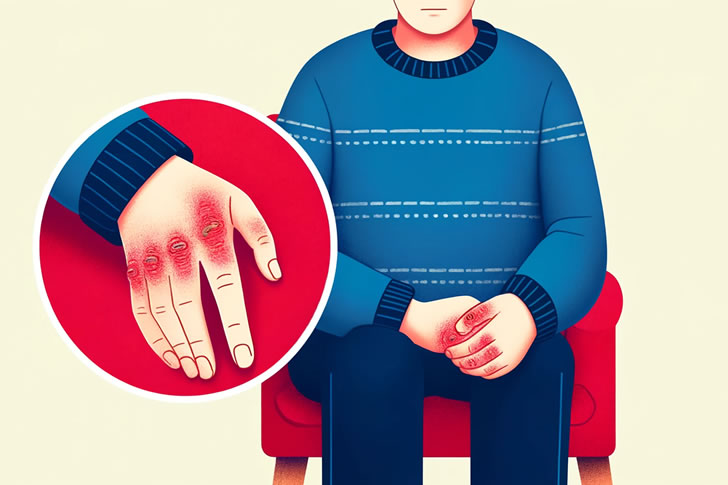Unraveling the Mystery of Psoriatic Arthritis: What Experts Want You to Know
Psoriatic arthritis (PsA) is a chronic inflammatory disease that affects both the skin and joints. This article explores what you need to know about PsA, offering valuable insights into its impact and management.

Understanding Psoriatic Arthritis
Psoriatic arthritis is a form of arthritis that affects some people who have psoriasis—a condition that features red patches of skin topped with silvery scales. Most people develop psoriasis first and are later diagnosed with psoriatic arthritis, but the joint problems can sometimes begin before skin patches appear. PsA can affect any part of your body, including your fingertips and spine, and can range from relatively mild to severe. Both psoriatic arthritis and psoriasis are chronic diseases that get worse over time, but you might have periods when your symptoms improve or go away temporarily.
Who Is Affected?
Approximately 30% of people with psoriasis also develop psoriatic arthritis. It affects men and women equally and typically appears between the ages of 30 and 50, though it can occur at any age. In seniors, the disease may present additional challenges due to the presence of other age-related health issues.
Key Indicators in Seniors
Understanding the early indicators of psoriatic arthritis is crucial for managing the disease effectively, especially in seniors. One of the common indicators in seniors is joint pain and stiffness, which may be attributed to normal aging or other types of arthritis. However, PsA has distinctive characteristics that set it apart.
Joint Inflammation and Swelling
Joint inflammation in PsA can be severe and is often accompanied by swelling. The inflammation may cause the fingers and toes to swell, giving them a sausage-like appearance, a condition known as dactylitis. This can lead to significant discomfort and can impact daily activities.
Skin and Nail Changes
Plaque psoriasis is common in people with PsA. This form of psoriasis is characterized by raised, red patches covered with a silvery white buildup of dead skin cells. These plaques are often itchy and painful and can occur anywhere on the body. Nail changes are also common, with pitting, discoloration, and separation from the nail bed being telltale signs.
Early Indicators in Hands
PsA can significantly affect the hands, causing pain, swelling, and difficulty in movement. Early indicators in the hands include swelling of an entire finger or toe, known as “sausage digit,” and nail abnormalities such as pitting or separation from the nail bed. These manifestations can make everyday tasks challenging and reduce the quality of life.
Impact on Daily Life
The impact of psoriatic arthritis on daily life can be profound. The chronic pain and fatigue associated with the condition can make it difficult to perform everyday tasks. This is especially challenging for seniors who may already have reduced mobility. The emotional toll is also significant, as living with a chronic disease can lead to feelings of frustration and depression.
Diagnosis and Monitoring
Early diagnosis and regular monitoring are essential in managing PsA. Physicians use a combination of physical examinations, medical history, blood tests, and imaging studies to diagnose and monitor the progression of the disease. Regular check-ups are crucial to assess the effectiveness of treatments and make necessary adjustments.
What Does Psoriatic Arthritis Look Like?
Psoriatic arthritis can present in various ways, and its appearance can vary from person to person. Common visual indicators include:
- Joint Redness and Swelling: Affected joints may appear red and swollen due to inflammation.
- Plaque Psoriasis: Raised, red patches with a silvery white buildup of dead skin cells, often found on the scalp, elbows, knees, and lower back.
- Nail Changes: Nails may develop pitting, ridges, or discoloration and may separate from the nail bed.
To understand what PsA looks like, one can refer to medical resources and plaque psoriasis pictures, which provide a visual representation of these symptoms.
Management and Care
Managing psoriatic arthritis involves a multifaceted approach. Here are some key aspects:
- Medications: Various medications can help control inflammation and slow disease progression. These include nonsteroidal anti-inflammatory drugs (NSAIDs), disease-modifying antirheumatic drugs (DMARDs), and biologics.
- Lifestyle Modifications: Maintaining a healthy lifestyle can significantly impact disease management. Regular exercise, a balanced diet, and stress management techniques can help alleviate symptoms.
- Physical Therapy: Physical therapy can improve joint function and reduce pain. Therapists can design personalized exercise programs to maintain flexibility and strength.
- Regular Monitoring: Regular check-ups with a healthcare provider are crucial to monitor disease progression and adjust treatments as necessary.
Conclusion
Psoriatic arthritis is a complex and challenging condition that requires comprehensive management. Early detection and a proactive approach to treatment can significantly improve the quality of life for those affected. By understanding the key aspects of PsA, individuals can better manage their condition and maintain an active and fulfilling life.







Recent Comments